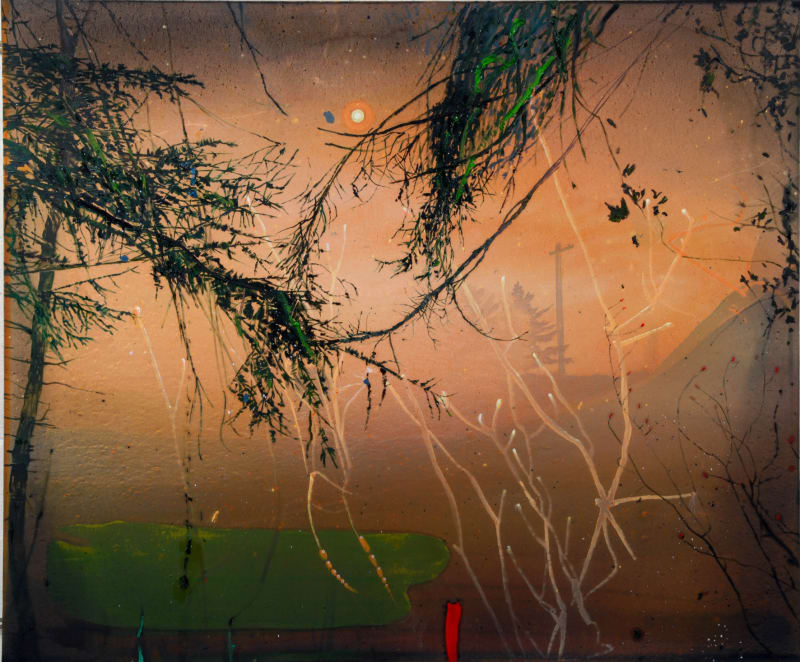The gallery is pleased to present its second solo exhibition of painter Elizabeth Magill - her first in London for six years. The exhibition brings together a body of work made over the past two years.
In the painting Chronicle of Orange - tree branches interweave with intense green brush marks over a pool of toxic green; a dab of chilli red paint punctuates the surface, vanishing white twigs echoed by a blinding sun obliterate the vague landscape. At first glance one might perceive the work as landscape painting, but looking again other levels of reality subtly emerge through the pictorial gestures and traces embedded in the canvas and one is led to the inherent mental landscape at the core of the work.
Magill’s paintings all begin with layers of thinned paint being applied to the canvas - these random fluid elements create the visual backdrop out of which her paintings emerge. ‘As much as anything, the coherence of her paintings is understood through the manner in which elements of widely varying descriptive and expressive tenor are brought into relation. The studied and precise observation is countered with the capricious or wilful gesture, the haze of memory and nostalgia is overlaid with bursts of harsh clarity, the local and terrestrial gets flipped into cosmic or subatomic scale’. from catalogue essay Northern Carmine by Michael Archer, catalogue Wilkinson Gallery 2008
In ‘Red Generator’ the intensity of the red sky intoxicates and permeates the whole canvas and leads one to experience what looks like an urban scene in sunset as a threshold moment between an objective and hallucinated vision.. Elizabeth Magill takes this dual dimensional experience further in Mystic Lamb. Part of her 12” series, this smaller painting departs to reach a level of total emotional abstraction. The iconography of the sacrificial Agnus Dei, which in the Christian tradition is represented surrounded by the holy rays, is transformed. The rays originating from a series of concentric circles are still in the painting but the body is absent and only vaguely referenced by the thick red brush strokes. One does not experience the sacred representation, but the vision of the emotional fallouts of its disintegration. The interplay between reality and the suggested is also displayed in Heartland. The washed out drippings forming a grid on the top of the canvas, the stencil dots over imposed on the center of the group of trees, all act as personal notes, transforming the actual land into a place of memory. The pink and violet pools etching their way into the surface take the painting to another level suggesting something more beyond the surface.
To accompany the exhibition a catalogue will be published with texts by Michael Archer and Cherry Smyth.

